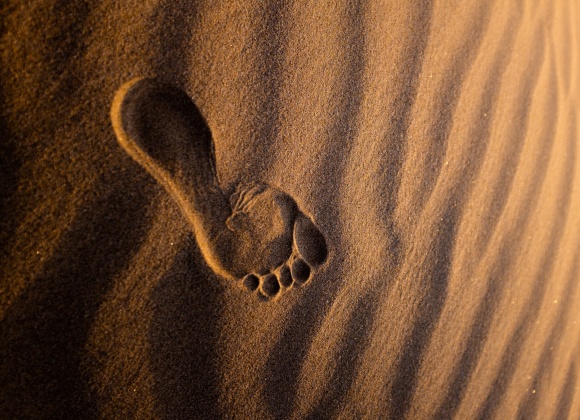Why are my Walls so Cold? Tips from Energy Assessors
Do your walls feel cold if you touch them on a cool day? If the answer is yes, then you’re not alone. Many homeowners complain about their walls feeling cold or damp.
What causes cold walls?
Poor insulation is the main reason why walls feel cold, especially in older properties with solid walls. Roughly 35% of heat loss is through walls and gaps, in and around windows and doors. Walls transfer heat and the warmth from your home will escape outside if your walls are poorly insulated. This will make the wall feel noticeably colder in comparison to the temperature in the room.
On the other hand, a well-insulated wall will create a barrier to stop heat from escaping. This means that the wall can hold heat better and will feel warm when you touch it. Most solid-walled properties have issues with cold walls and condensation. If your property has cavity walls and you start to notice that they feel cold, then you may need to upgrade your cavity wall insulation.
Should I be worried about cold walls?
Cold walls are a common issue in homes and buildings. If your walls feel very cold, then your home is likely to be losing significant heat and this will increase your energy bills on time. Cold walls can also cause condensation to form on your walls which can lead to issues like mold. If you notice that your walls feel damp, then you should take action quickly to resolve the problem and avoid damage to your property.
You may decide not to do anything if your walls feel slightly chilly and you haven’t noticed an increase in your energy bills. Find out how much it will cost to rectify the problem and then decide whether it is worth the expense.
How can I make my walls warmer?
The easiest way to make your walls warmer is by adding extra insulation. The cost of this will depend on your property and the size of the problem. If you live in an old solid-walled property, then you may need to invest in a large insulation project like installing an external insulation system. This is one of the most effective ways to improve wall insulation, but it isn’t cheap.
If your home has wall cavities, then you should be able to fill in the cavity with insulating material to prevent heat loss. This is a much more affordable option and it can be highly effective. If you already have wall cavity insulation installed but start to experience cold walls, then you may need to replace your cavity insulation. Contact your local cavity insulation removal specialist for advice.
How can I stop my walls from becoming damp?
As mentioned, cold walls can form condensation and become damp. This moisture should disappear when you install insulation in your walls. If you are unable to install insulation for whatever reason, then you will need to find other ways to reduce moisture on cold walls.
The easiest way to stop your walls from becoming damp is by using a ventilation system to remove excess moisture from the air and keep your walls dry. A radiant heater can also be used to keep the air dry and prevent condensation from forming on your walls.
Other ways to reduce home heat loss
There are several other ways to reduce heat loss in your home. An energy assessor can help you identify ways to improve your home’s energy performance and minimise heat loss. This will reduce carbon emissions, improve comfort levels in your home, and slash your monthly energy bills.
Here are some additional ways to reduce heat loss in your home:
Floor insulation
Insulating your ground floors will help to prevent heat from escaping out of the bottom of your house. Hardwood floors can have insulating material inserted under the floorboards to keep your property warmer.
Roof insulation
Most homes lose 25% of their heat through the roof. Insulating your roof will keep your home warm and reduce your average energy bills.
New windows and doors
Replacing your windows and doors with eco-friendly designs can be a great way to reduce heat loss and improve your home’s energy efficiency rating.
Summary
If your walls feel cold when you touch them, then it is likely that your home is not well insulated. Fortunately, you can easily make your walls warmer by installing extra insulation and completing other home energy upgrades. This will reduce heat loss, lower carbon emissions, and save you money on utility bills.
Do your walls feel cold if you touch them on a cool day? If the answer is yes, then you’re not alone. Many homeowners complain about their walls feeling cold or damp.
What causes cold walls?
Poor insulation is the main reason why walls feel cold, especially in older properties with solid walls. Roughly 35% of heat loss is through walls and gaps, in and around windows and doors. Walls transfer heat and the warmth from your home will escape outside if your walls are poorly insulated. This will make the wall feel noticeably colder in comparison to the temperature in the room.
On the other hand, a well-insulated wall will create a barrier to stop heat from escaping. This means that the wall can hold heat better and will feel warm when you touch it. Most solid-walled properties have issues with cold walls and condensation. If your property has cavity walls and you start to notice that they feel cold, then you may need to upgrade your cavity wall insulation.
Should I be worried about cold walls?
Cold walls are a common issue in homes and buildings. If your walls feel very cold, then your home is likely to be losing significant heat and this will increase your energy bills on time. Cold walls can also cause condensation to form on your walls which can lead to issues like mold. If you notice that your walls feel damp, then you should take action quickly to resolve the problem and avoid damage to your property.
You may decide not to do anything if your walls feel slightly chilly and you haven’t noticed an increase in your energy bills. Find out how much it will cost to rectify the problem and then decide whether it is worth the expense.
How can I make my walls warmer?
The easiest way to make your walls warmer is by adding extra insulation. The cost of this will depend on your property and the size of the problem. If you live in an old solid-walled property, then you may need to invest in a large insulation project like installing an external insulation system. This is one of the most effective ways to improve wall insulation, but it isn’t cheap.
If your home has wall cavities, then you should be able to fill in the cavity with insulating material to prevent heat loss. This is a much more affordable option and it can be highly effective. If you already have wall cavity insulation installed but start to experience cold walls, then you may need to replace your cavity insulation. Contact your local cavity insulation removal specialist for advice.
How can I stop my walls from becoming damp?
As mentioned, cold walls can form condensation and become damp. This moisture should disappear when you install insulation in your walls. If you are unable to install insulation for whatever reason, then you will need to find other ways to reduce moisture on cold walls.
The easiest way to stop your walls from becoming damp is by using a ventilation system to remove excess moisture from the air and keep your walls dry. A radiant heater can also be used to keep the air dry and prevent condensation from forming on your walls.
Other ways to reduce home heat loss
There are several other ways to reduce heat loss in your home. An energy assessor can help you identify ways to improve your home’s energy performance and minimise heat loss. This will reduce carbon emissions, improve comfort levels in your home, and slash your monthly energy bills.
Here are some additional ways to reduce heat loss in your home:
Floor insulation
Insulating your ground floors will help to prevent heat from escaping out of the bottom of your house. Hardwood floors can have insulating material inserted under the floorboards to keep your property warmer.
Roof insulation
Most homes lose 25% of their heat through the roof. Insulating your roof will keep your home warm and reduce your average energy bills.
New windows and doors
Replacing your windows and doors with eco-friendly designs can be a great way to reduce heat loss and improve your home’s energy efficiency rating.
Summary
If your walls feel cold when you touch them, then it is likely that your home is not well insulated. Fortunately, you can easily make your walls warmer by installing extra insulation and completing other home energy upgrades. This will reduce heat loss, lower carbon emissions, and save you money on utility bills.



